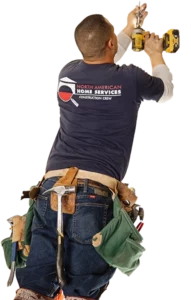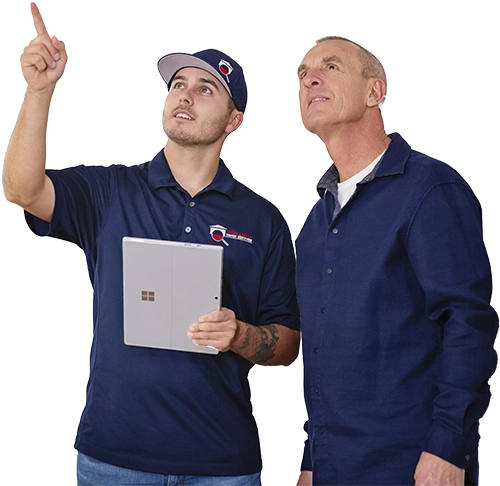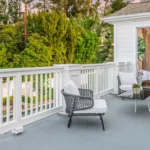A reserve study is a professional evaluation that helps property associations—like HOAs, condominium boards, and property managers—plan financially for the future repair or replacement of shared components within a property. It is both a physical inspection and a financial forecast that ensures a community is prepared for long-term maintenance without relying on unexpected special assessments or emergency funds.
Why Are Reserve Studies Important?
They ensure funds are set aside in advance for major repairs, preventing budget shortfalls and unexpected special assessments.
A well-prepared reserve study also helps preserve property values, supports responsible fiscal management, and gives homeowners greater confidence in the HOA’s long-term planning.
What Is the Purpose of a Reserve Study?
The main goals of a reserve study are:
- Identify common elements that need repair or replacement (e.g., roofing, plumbing, siding, balconies).
- Estimate when these components will need work.
- Calculate how much money should be set aside over time.
- Create a long-term funding plan to avoid financial shortfalls.
What Is a Reserve Study for an HOA?
For HOAs, a reserve study is a tool used to forecast major future expenses related to community-maintained assets. California law requires HOAs to have reserve studies to ensure financial readiness and transparency.
What Does a Reserve Study Include?
A complete reserve study includes:
- Physical inspection of shared/common area components
- Estimated life spans of each component
- Repair/replacement cost projections
- 30-year funding plan
- Reserve fund balance analysis
What Are the Two Main Components of a Reserve Fund Study?
- Physical Analysis – The visual inspection of assets to determine condition, remaining life, and necessary maintenance.
- Financial Analysis – A forecast of required reserve contributions to fund future repairs based on the physical analysis.
Is a Reserve Study Required in California?
Yes. Under California Civil Code §5550, HOAs must:
- Conduct a visual inspection of major components every 3 years.
- Review and update the reserve funding plan annually.
- Ensure reserves are adequate to meet future obligations.
Failing to comply can lead to legal consequences and poor financial standing.
Who Needs a Reserve Study?
- Homeowners Associations (HOAs)
- Condominium Associations
- Townhome Communities
- Property Management Companies
- Cooperative Housing Groups
If your community maintains shared elements, a reserve study is essential—and often legally required.
Who Performs a Reserve Study?
Qualified professionals such as certified reserve specialists (CRS), engineers, or licensed inspection firms perform reserve studies. In California, it’s best to work with local experts familiar with state laws and building standards.
If you’re in Sacramento or nearby areas and need a reliable, certified reserve study inspection, Good Life Inspections is ready to help.
How Much Does a Reserve Study Cost?
The cost of a reserve study typically ranges from $1,200 to $4,000+, depending on factors like the size of the property, number of shared components, age of the building, and the level of detail required. Communities with more complex or extensive amenities may see higher costs.
Most HOAs include reserve studies in their annual operating budgets. To get an accurate price for your specific property, it’s best to request a personalized quote from a qualified provider like Good Life Inspections.
How Often Should You Do a Reserve Study?
According to California law:
- A full visual inspection is required every 3 years.
- The financial portion of the study should be reviewed and updated annually.
What Happens If You Skip a Reserve Study?
Skipping a reserve study can result in:
- Legal noncompliance for HOAs in California
- Inadequate savings for major repairs
- Emergency assessments or loans
- Lower property values
- Frustrated homeowners
What’s the Difference Between a Reserve Study and a Home Inspection?
- A home inspection focuses on one individual unit or property, typically before sale.
- A reserve study evaluates shared/common components in a multi-unit or community setting and forecasts long-term maintenance costs.
How Long Does a Reserve Study Take?
- On-site inspection: 1 to 2 days, depending on property size
- Report delivery: usually within 7 to 10 business days
Can One Study Cover Multiple Properties?
No. Each property has its own unique set of components, usage patterns, and financial needs. A separate reserve study is required for each community or property managed.
How Are Reserve Studies and SB 326 Inspections Related?
Both reserve studies and SB 326 inspections are California legal requirements for common-interest developments like HOAs and condominiums—but they serve different purposes.
- A reserve study evaluates the condition of shared components (like roofs and siding) and provides a financial plan to cover future repairs.
- An SB 326 inspection focuses on Exterior Elevated Elements (EEEs) such as balconies, decks, walkways, and stairs—specifically for structural safety.
Together, they offer a complete view of a community’s obligations:
➡️ Reserve studies = financial health
➡️ SB 326 inspections = physical safety
✅ Tip: Many communities schedule both at the same time to save time and ensure full compliance.
Does an SB 326 Inspection Impact the Reserve Study?
Yes — it can and often should.
If an SB 326 inspection identifies structural issues with elevated elements like balconies or walkways, those findings should be included in the reserve study’s funding plan. Any recommended repairs—especially those needed in the near future—should be accounted for in the cost projections and funding timeline.
That’s why close coordination between the SB 326 inspection provider and the reserve study company is so important. Keeping both reports aligned ensures your HOA remains compliant, well-informed, and financially prepared.
How to Prepare for a Reserve Study
- Gather maintenance records and past reserve studies
- Provide access to all shared/common areas
- Share current financial documents and budgets
- Notify board members and property managers of the scheduled inspection
Reserve studies are more than a legal requirement—they’re a smart planning tool for the long-term financial stability of any shared community.




